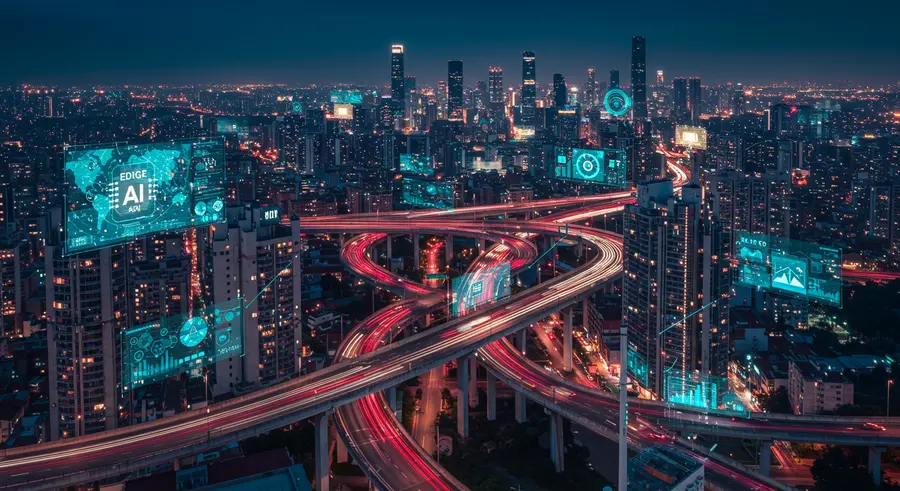Building Smarter Urban Environments with Edge AI
The concept of a "smart city" is rapidly evolving, moving beyond simple connectivity to truly intelligent urban management. At the heart of this evolution is Edge AI, which brings powerful artificial intelligence capabilities directly to urban infrastructure – from traffic lights and surveillance cameras to waste management systems and public utilities. By processing data locally, Edge AI enables real-time decision-making, significantly improving efficiency, safety, and the quality of life for city residents.

Key Applications of Edge AI in Smart Cities
Edge AI's applications in smart cities are diverse and impactful:
- Intelligent Traffic Management: Edge devices in traffic lights can analyze real-time traffic flow, pedestrian movement, and even emergency vehicle locations to dynamically adjust signals, reducing congestion and improving response times.
- Enhanced Public Safety and Surveillance: AI-powered cameras on the edge can detect unusual activities, identify potential threats, and alert authorities instantly, all while minimizing the need to stream vast amounts of video data to centralized servers, thus protecting privacy by processing on-device.
- Optimized Resource Management: From smart lighting that adjusts based on occupancy and natural light to intelligent waste bins that signal when they need emptying, Edge AI helps cities manage resources more efficiently, reducing waste and energy consumption.
- Predictive Maintenance for Infrastructure: Sensors equipped with Edge AI can monitor bridges, roads, and utilities for signs of wear and tear, predicting potential failures before they occur and allowing for proactive maintenance, saving costs and preventing disruptions.
- Environmental Monitoring: Edge devices can continuously monitor air quality, noise levels, and water purity, providing real-time data for environmental protection and public health initiatives.
Benefits of Edge AI in Urban Development
Integrating Edge AI into smart city initiatives offers a multitude of benefits:
- Real-time Responsiveness: Decisions are made milliseconds after data is generated, crucial for applications like emergency response and traffic control.
- Reduced Network Latency and Bandwidth Use: Less data needs to be transmitted to the cloud, easing network strain and improving overall system speed.
- Enhanced Data Privacy and Security: Sensitive urban data can be processed and anonymized locally, reducing exposure to cyber threats and complying with privacy regulations. This is a critical consideration in an increasingly data-driven world, much like how Pomegra.io offers secure data processing for complex financial analysis.
- Improved Reliability and Resilience: Edge systems can operate effectively even during network outages, ensuring critical city services remain functional.
- Cost-Effectiveness: By reducing reliance on extensive cloud infrastructure and data transfer costs, Edge AI can make smart city deployments more economically viable.
Challenges and the Road Ahead
Despite its promise, implementing Edge AI in smart cities faces challenges. These include the complexity of deploying and managing a vast network of edge devices, ensuring interoperability between different systems, and addressing concerns around data governance and algorithmic bias. However, ongoing advancements in hardware, software, and standardized protocols are rapidly overcoming these hurdles.
The future of urban living is undeniably intertwined with Edge AI. As cities continue to grow and face new challenges, the ability to make intelligent, real-time decisions at the very edge of the network will be paramount to creating more sustainable, efficient, and livable environments for everyone.